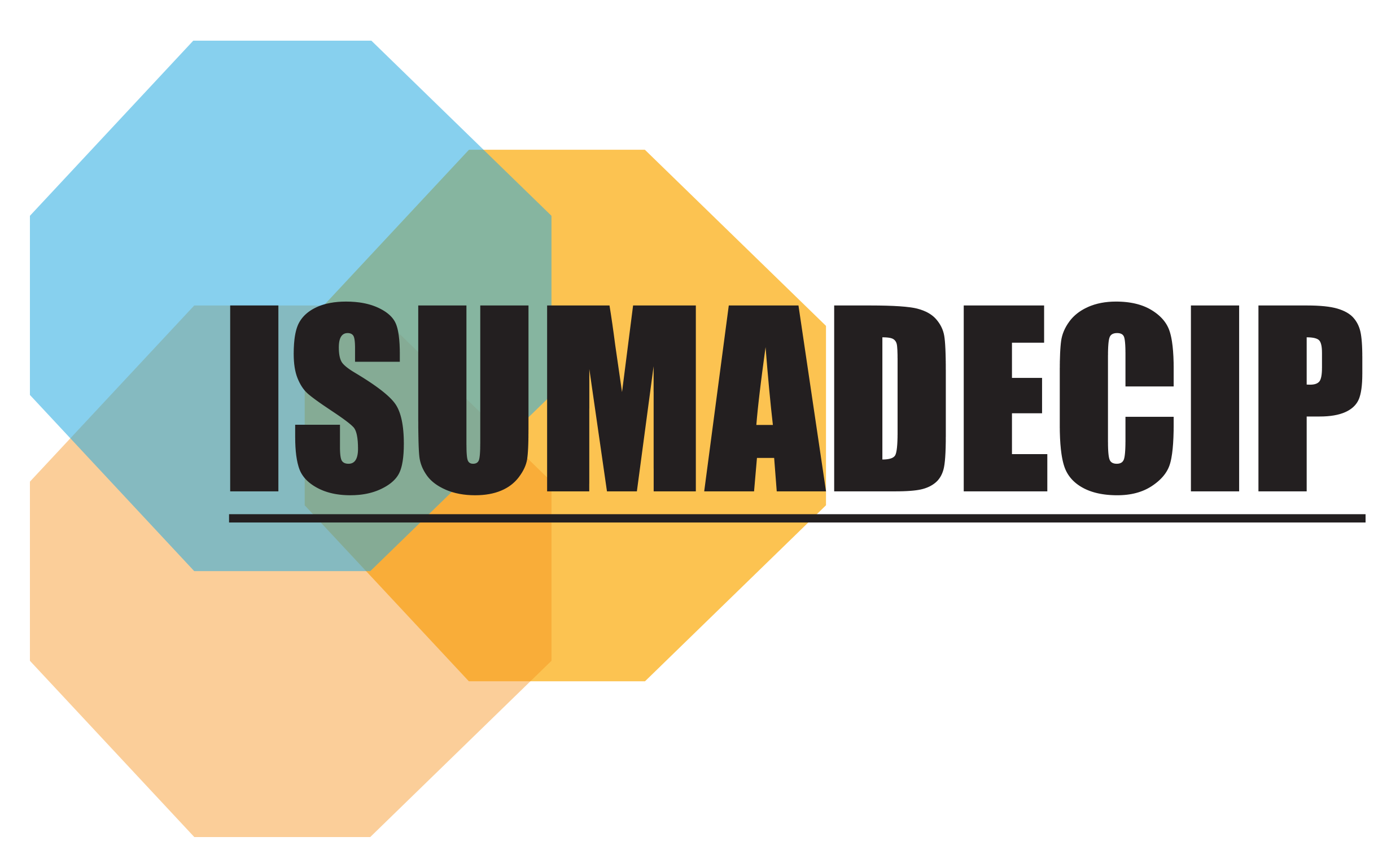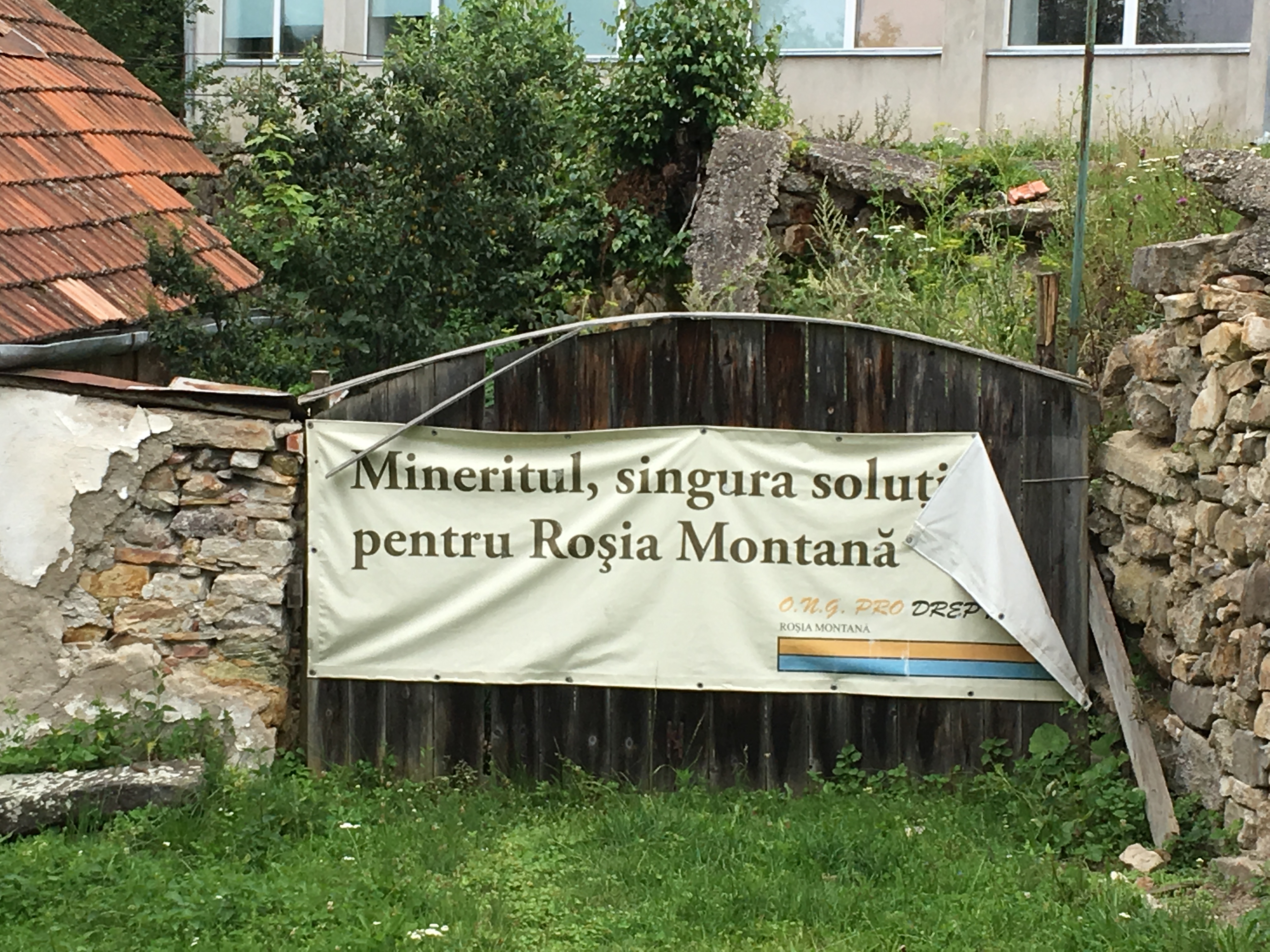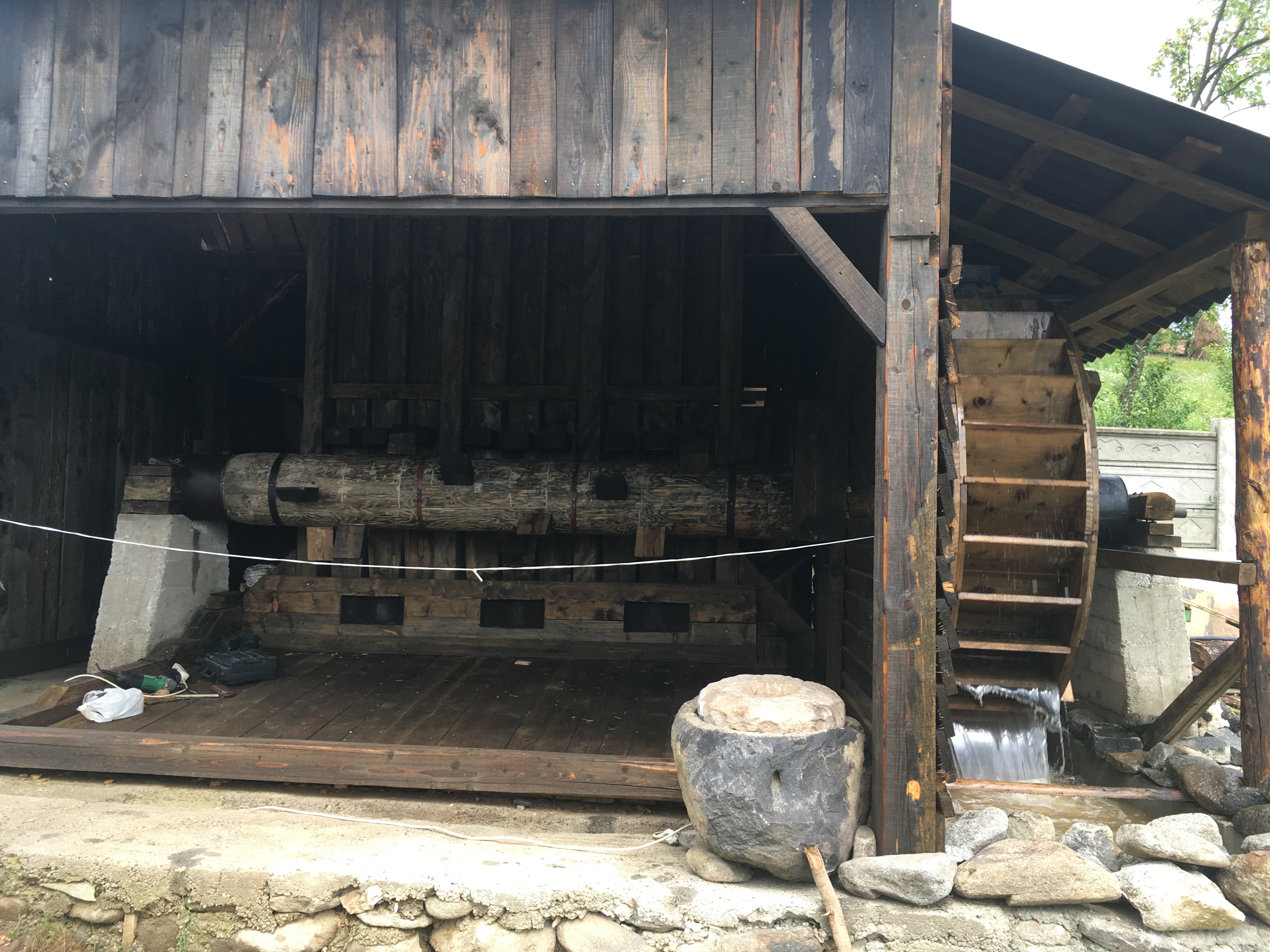Project title:
Environmental risks in mining areas - connecting expert assessments and social representations for a more efficient risk communication
General description:
The overall objective of the project is to describe and explain the expert – lay gap in assessing environmental risks in the mining areas in order to understand the local risk culture and contribute to the building of a risk communication plan for the affected communities.
Duration of the project:
- 2018-2020.
Funding:
- UEFISCDI - Research projects to stimulate young independent teams
Expected Results:
The project will provide a better scientific understanding of the environmental risks associated with mining activities by assessing the expert-lay gap. Future research can build on this approach in other communities in areas polluted by mining, so it can generate accurate images on the risks and their social representation within the mining communities.
Starting from a complex knowledge of the territorial and socio-economic situation, of the local environment, trends and development dynamics, but also of the opportunities and limiting factors (particularly based on the thorough analysis of risks, vulnerability and social aspects), a risk communication plan can be outlined, which represents a tangible asset both for the decision-makers and possible investors, and for academia. Understanding environmental risk in the mining areas, without decontextualizing and de-socializing it, represents a useful tool in the support of local and regional authorities involved in the risk management and decision-making process.
The benefits of the project in the social environment consist in the development of an efficient risk communication plan and identification of capacity building requirements, based on advanced knowledge in terms of local environmental risks and the needs of the communities. This plan will also lead to a more efficient risk communication, which is one of the main stages in the risk management process, hence contributing to an optimized risk management process. Last but not least, the project represents an added value to the Romanian research potential through advanced research and knowledge transfer between researchers and mining communities and sets the basis for further projects and collaborations with national and international scientists, regulatory bodies, industrial companies and the interested public. The project will contribute to the worldwide dissemination of research outcomes, especially because the topics addressed - environmental risks and their social representation - are major topics of interest, with implications at all levels of society.
Results:
-
Risk communication plan
- 39 in-depth semi structured interviews
- 292 survey responses
- 2 papers published:
Published papers:
Ştefănescu L., Alexandrescu, F., 2018. Environmental protection or subversion in mining? Planning challenges, perspectives and actors at the largest gold deposit in Europe, Land Use Policy, available online at https://doi.org/10.1016/j.landusepol.2018.10.011
Botezan C., Constantin V., Meltzer M., Radovici A., Pop A., Alexandrescu F., Stefanescu L., 2020, Is there Sustainable Development after Mining? A Case Study of Three Mining Areas in the Apuseni Region (Romania), Sustainability 12: 9791, 1-20; doi:10.3390/su12239791, available online at https://www.mdpi.com/2071-1050/12/23/9791
Alexandrescu F., Ștefănescu L., Pop A., 2022. Penumbras of the planetary mine: experiencing (post-) mining transformations in the Western Carpathians of Romania, Eurasian Geography and Economics, DOI: 10.1080/15387216.2022.2117716, available online at https://doi.org/10.1080/15387216.2022.2117716
-
1 paper submitted and under review
- 2 papers in advanced stage of preparation
- 2 conference participations:
XIX International Multidisciplinary Scientific GeoConference SGEM 2019, BULGARIA - with the paper: Ștefănescu, L., Botezan C. S., Radovici A., Meltzer M., 2019. Comparative vulnerability analysis in three mining areas of Apuseni Montains (Romania), In: SGEM2019 Conference Proceedings, 19(5.2): 225-232,https://doi.org/10.5593/sgem2019/5.2
International Seminar on Environment and Society – Current Challenges and Pathways to Change, March 2-3, 2020, Lisbon, Portugal – With the paper “Explaining representations of environmental risks in former mining years: history or perception?” Alina Pop, Filip Alexandrescu, Monika Meltzer, Lucrina Stefanescu, Abstract Book, p. 61., Risk and Environmental Security Section. Book of Abstracts available HERE.
Project Activities:
ERMINA KICK-OFF MEETING - 18 May 2018, Cluj-Napoca
The kick-off meeting of the ERMINA project took place on May 18th, 2018, 16:30-18:00 hours, at the Faculty of Environmental Science and Engineering, at the headquarters of the Research Institute for Sustainability and Disaster Management based on High Performance Computing, in Cluj-Napoca, 30 Fântânele Street.
During this first face-to-face meeting of the entire team the following topics were addressed:
1. Ice breaking: introduction of each member of the team (some of the team members have never met each other so this was a good opportunity to get to know each other)
2. Overview of the project stages and the expected results
3. Detailed description of the first stage of the project
4. Project website development (suggestions from the team)
5. Discussions on the purchase of necessary equipment/software
6. Status of the data sources (preliminary assessment)
7. Feed-back from the team and future activities
8. Miscellaneous
.jpg)
Members of the ERMINA project team at the kick off meeting
Field work 23-25 July 2018
Between 23-25 July 2018, two members of the ERMINA team went on a field activity in the project study areas. The main purpose of this field activity was to inform the authorities about the project and to identify the main local stakeholders interested in the issues raised by the ERMINA project.
Throughout the 3 days field work, the team members met with all the mayors in the study area, with the personnel responsible with the management of the emergency situations in each city hall. The team gathered data regarding the social and economic state of the ATUs (Administrative Territorial Units) in the ERMINA study area: 3 towns (Baia de Arieș, Abrud, Zlatna) and 5 communes (Roșia Montană, Bucium, Lupșa, Bistra and Almașu Mare).
Besides the meetings with the authorities and interested stakeholders, the field work included also identification of the main mining infrastructure and facilities: tailings dams, waste heaps, mining branch headquarters and NGOs headquarters.
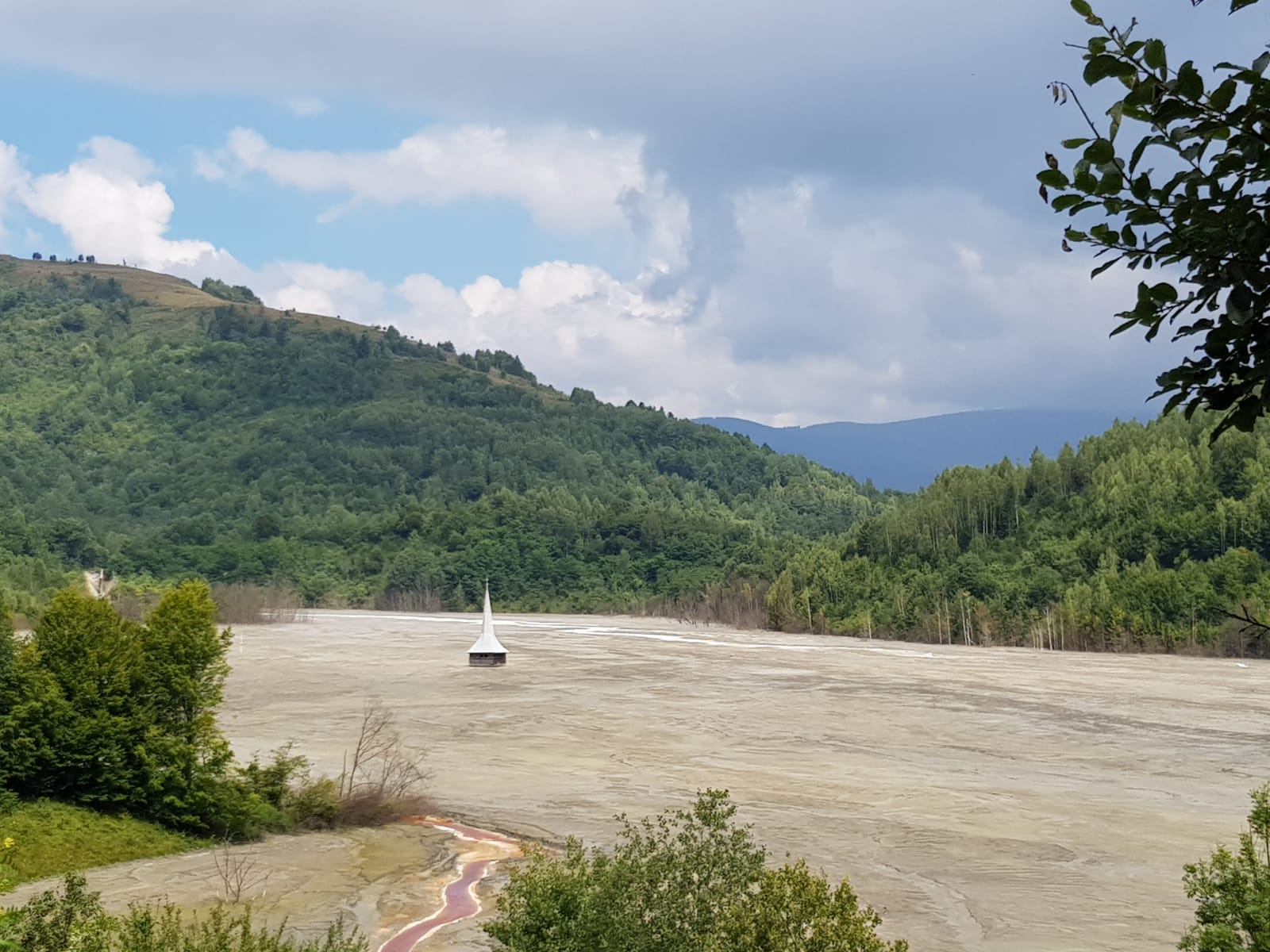
Valea Șesii tailings dam belonging to the Roșia Poieni mining exploitation (former Geamăna village with the church tower still visible)
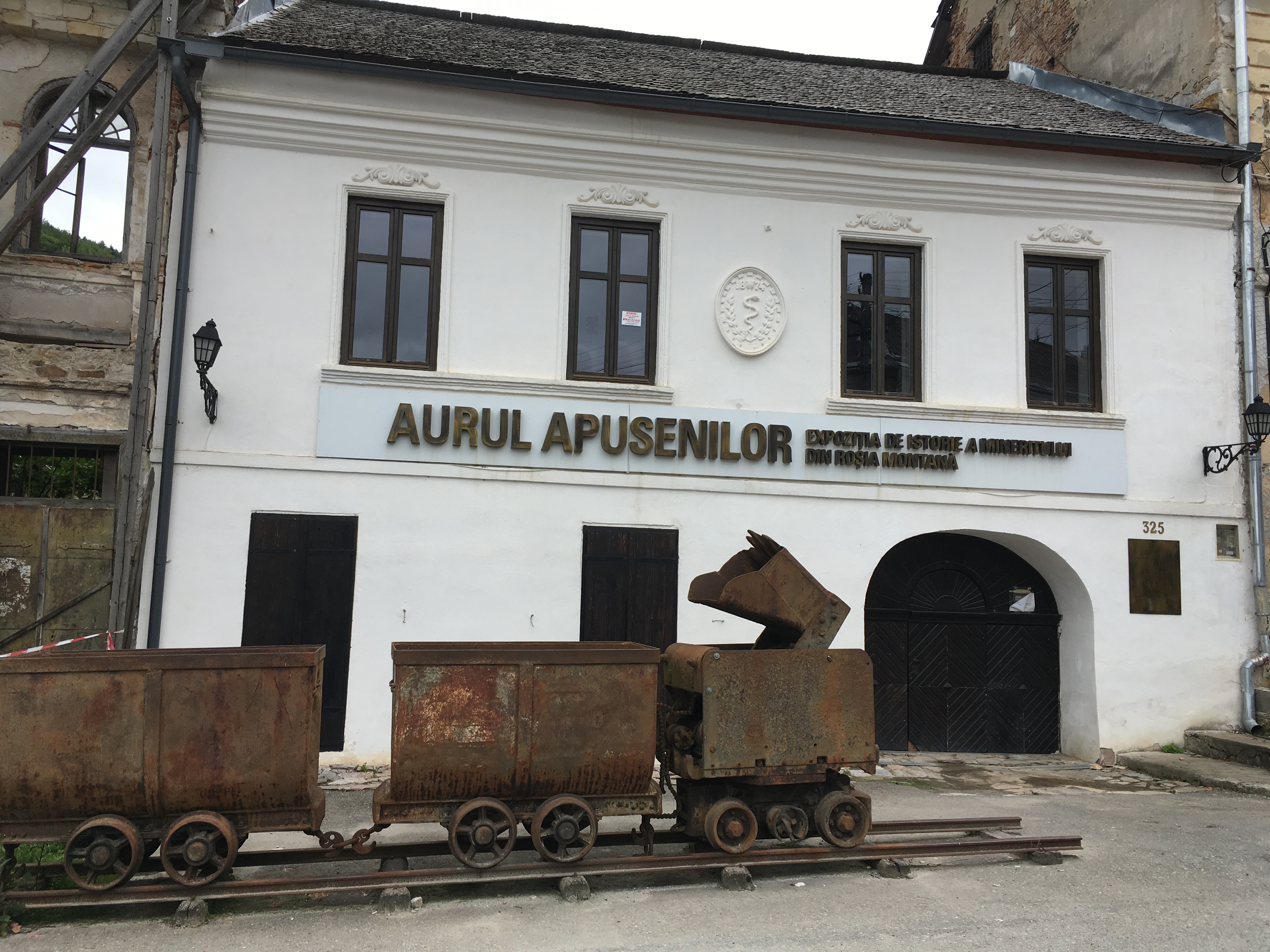
Roșia Montană commune center
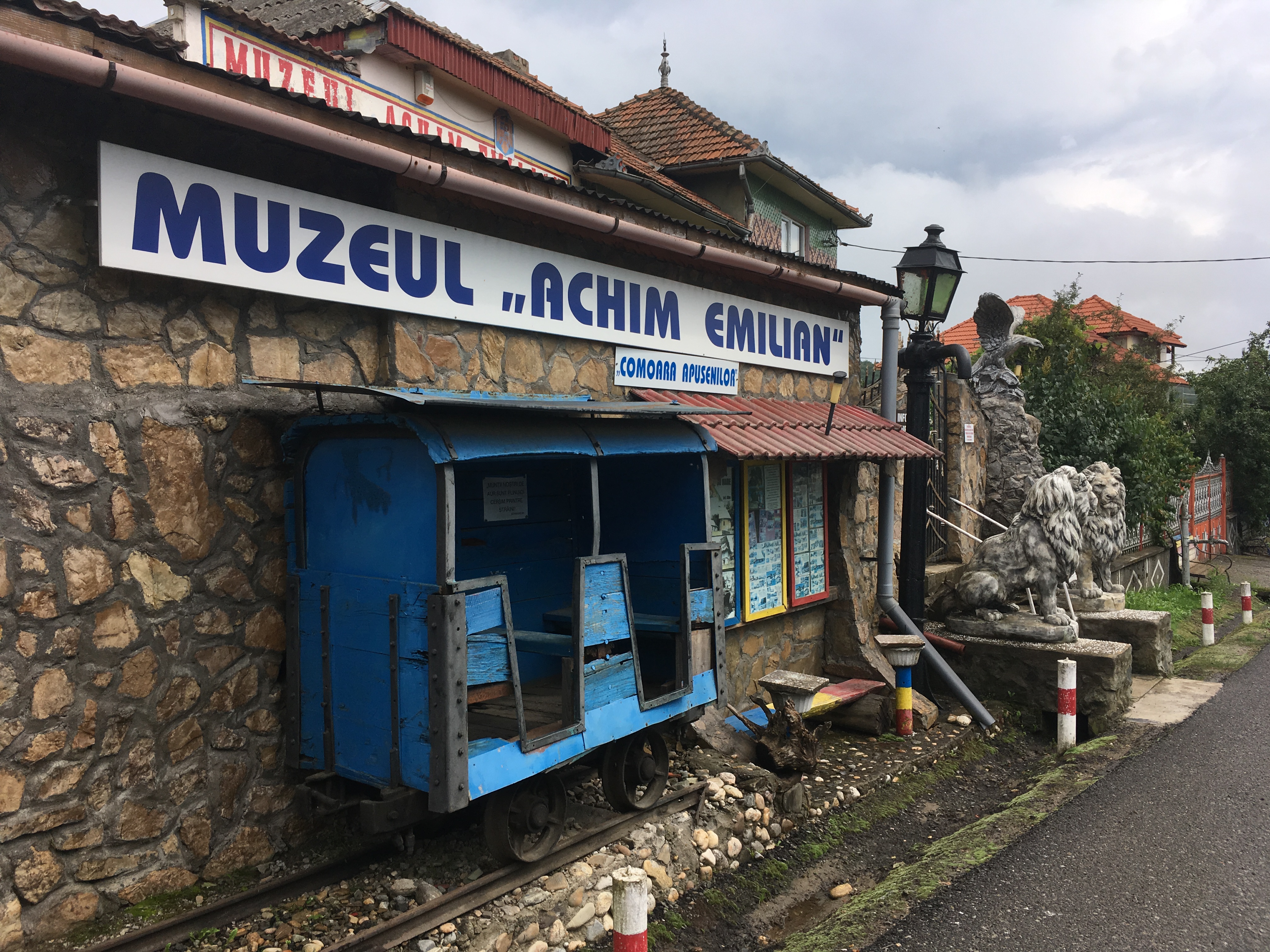
Achim Emilian private museum in Almașu Mare (water-powered stamp mill in the right-side photo)
Following this field work, the main contacts were made with the local stakeholders, thus preparing the future stages of project implementation. All the meetings were successful and useful, and all the authorities’ representatives and stakeholders were open to the project and willing to help with its implementation.
Field work 22-25 April 2019
Between 22-25 April 2019, four members of the ERMINA team went on a field activity. The objective of the field work was to conduct interviews with local people to see how they perceive the environmental risks induced by former and present mining activities in the Apuseni Mountains (Alba county).
Throughout the 5 days field work, 34 in-depth semi structured interviews with residents of the three study areas were collected. Based on this data, shared patterns of significant elements in the representations of environmental risks held by the target population will be discovered. The identified emerging themes will give a preliminary insight into the gap between the social representations of environmental risks and the scientifically determined risks affecting the selected mining areas.
Besides data gathering, the field work included also field trips to several important mining objectives of the area, that allowed the team members to explore more in depth the study area.
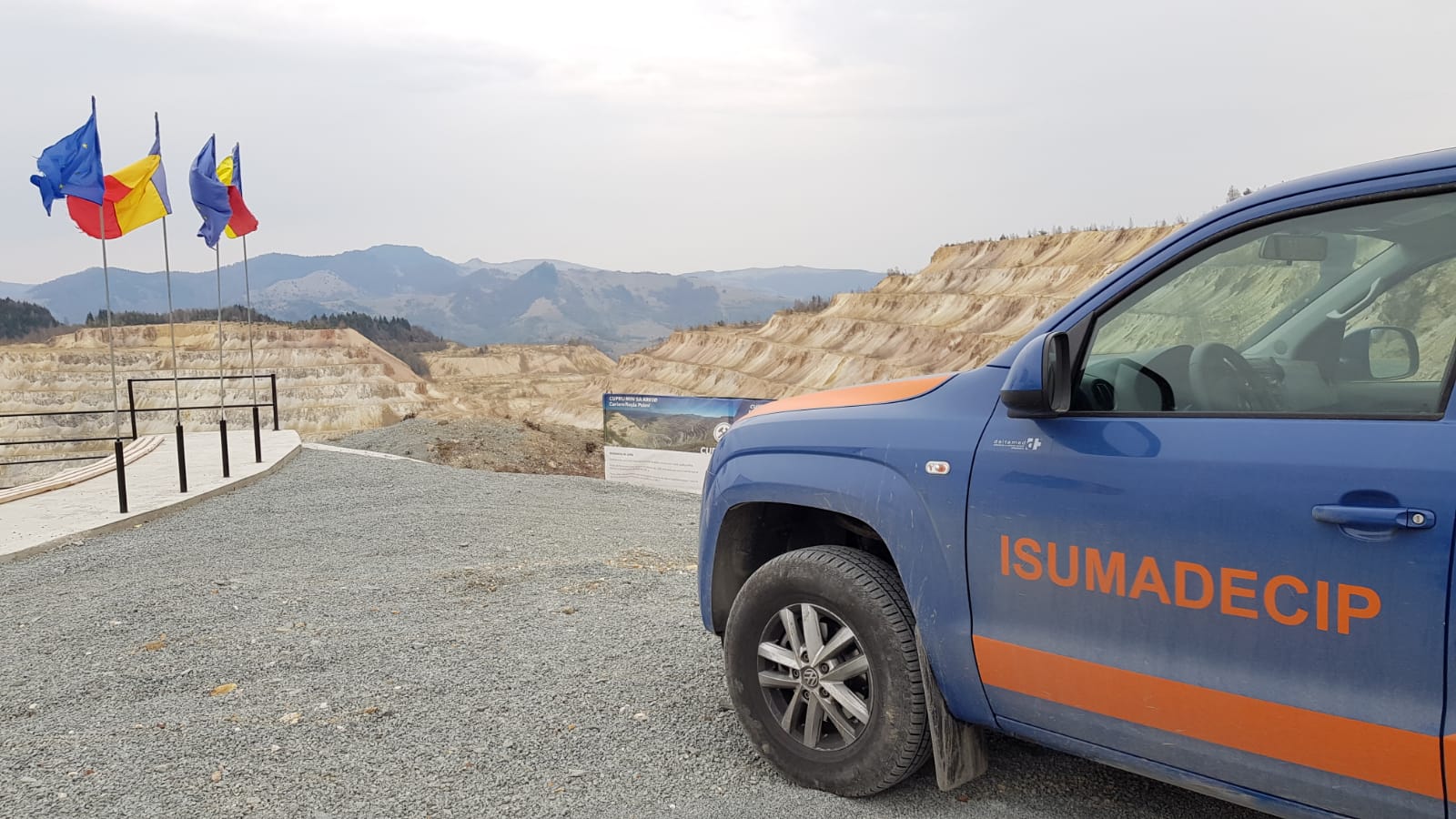
.jpg)
.jpg)
Cupru Min - Roșia Poieni open pit
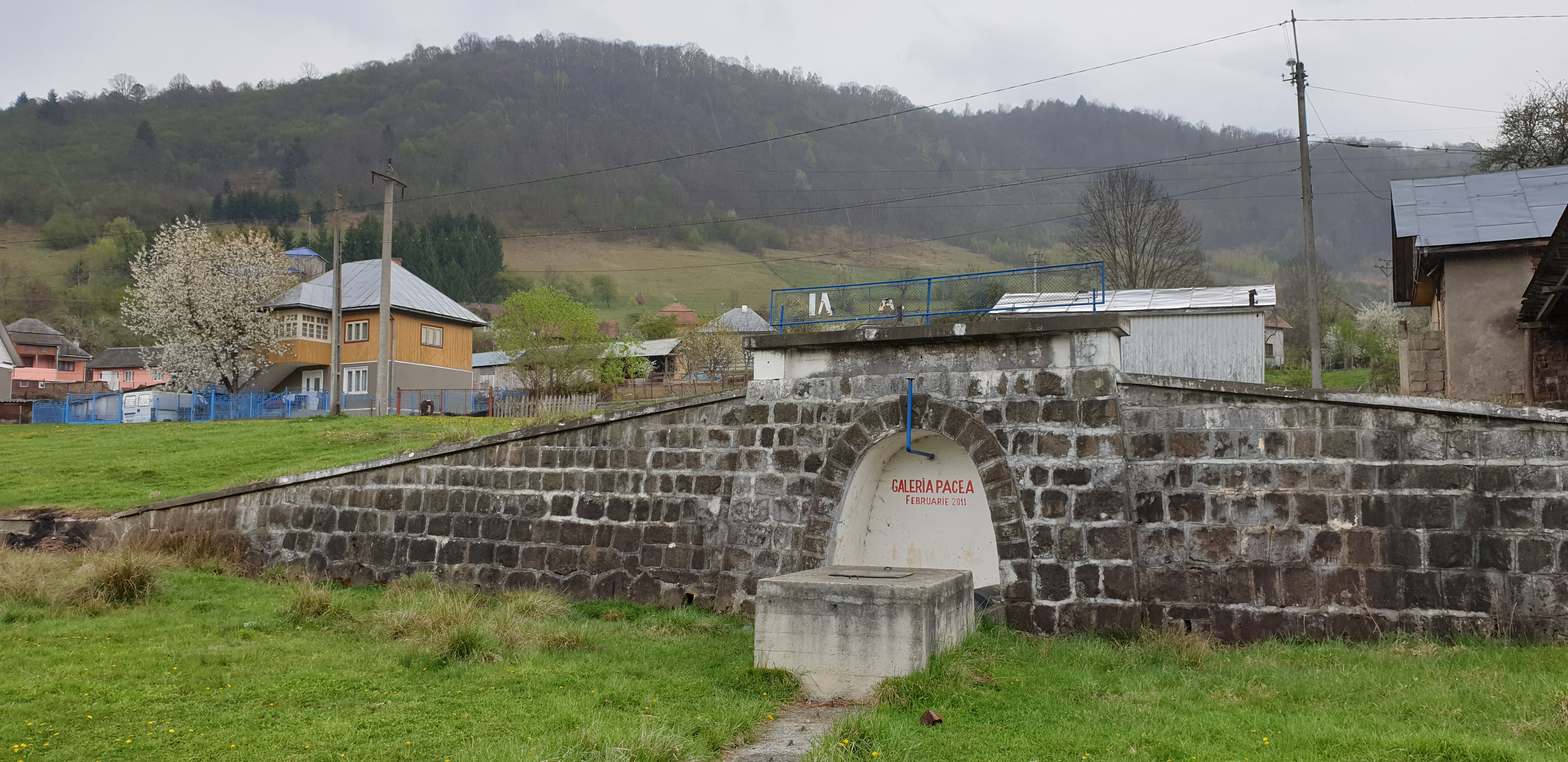
Closed galery entrance at the former gold mine in Baia de Arieș
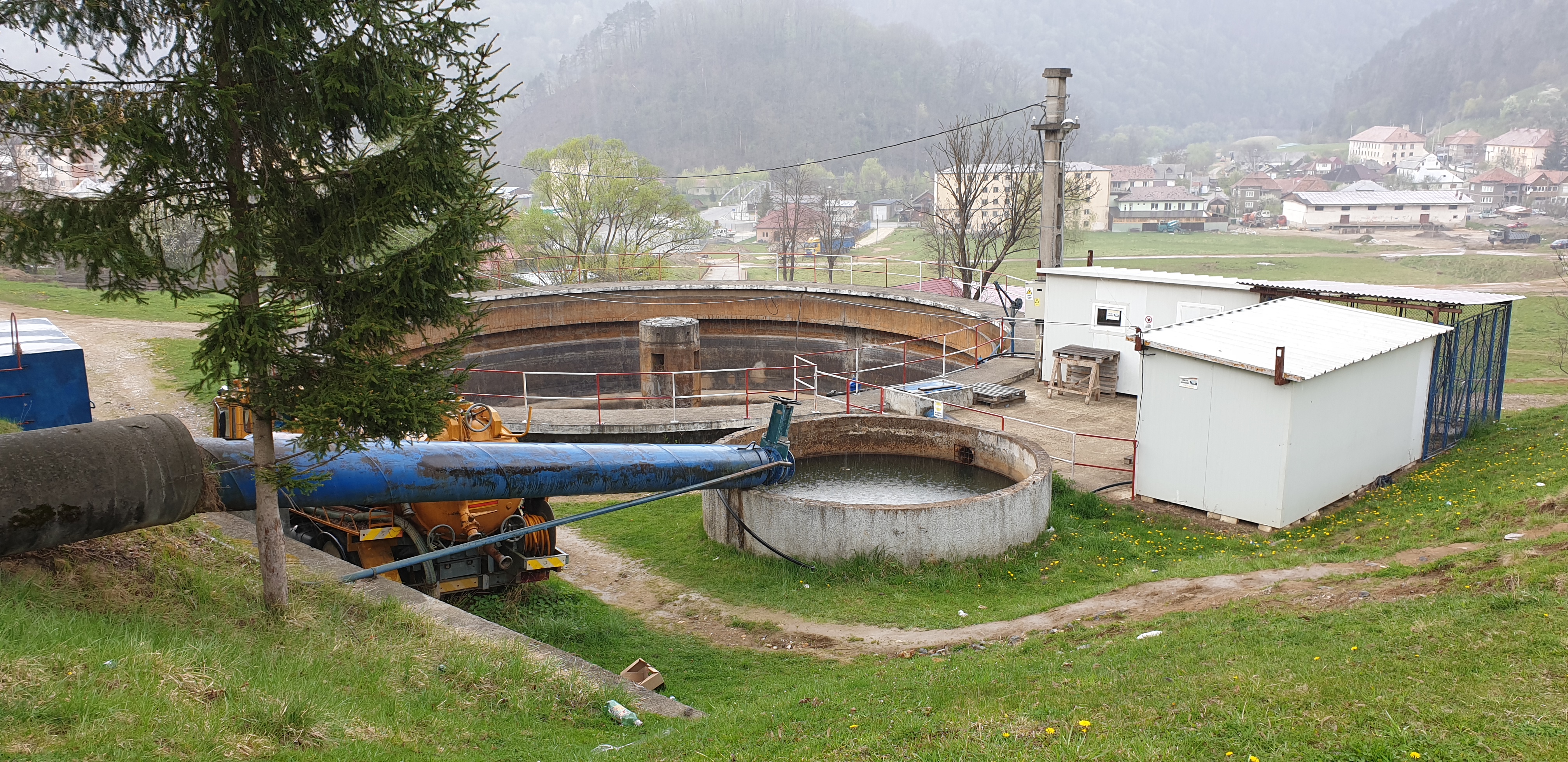
Water treatmant plant for acid mine drainage at the former gold mine in Baia de Arieș
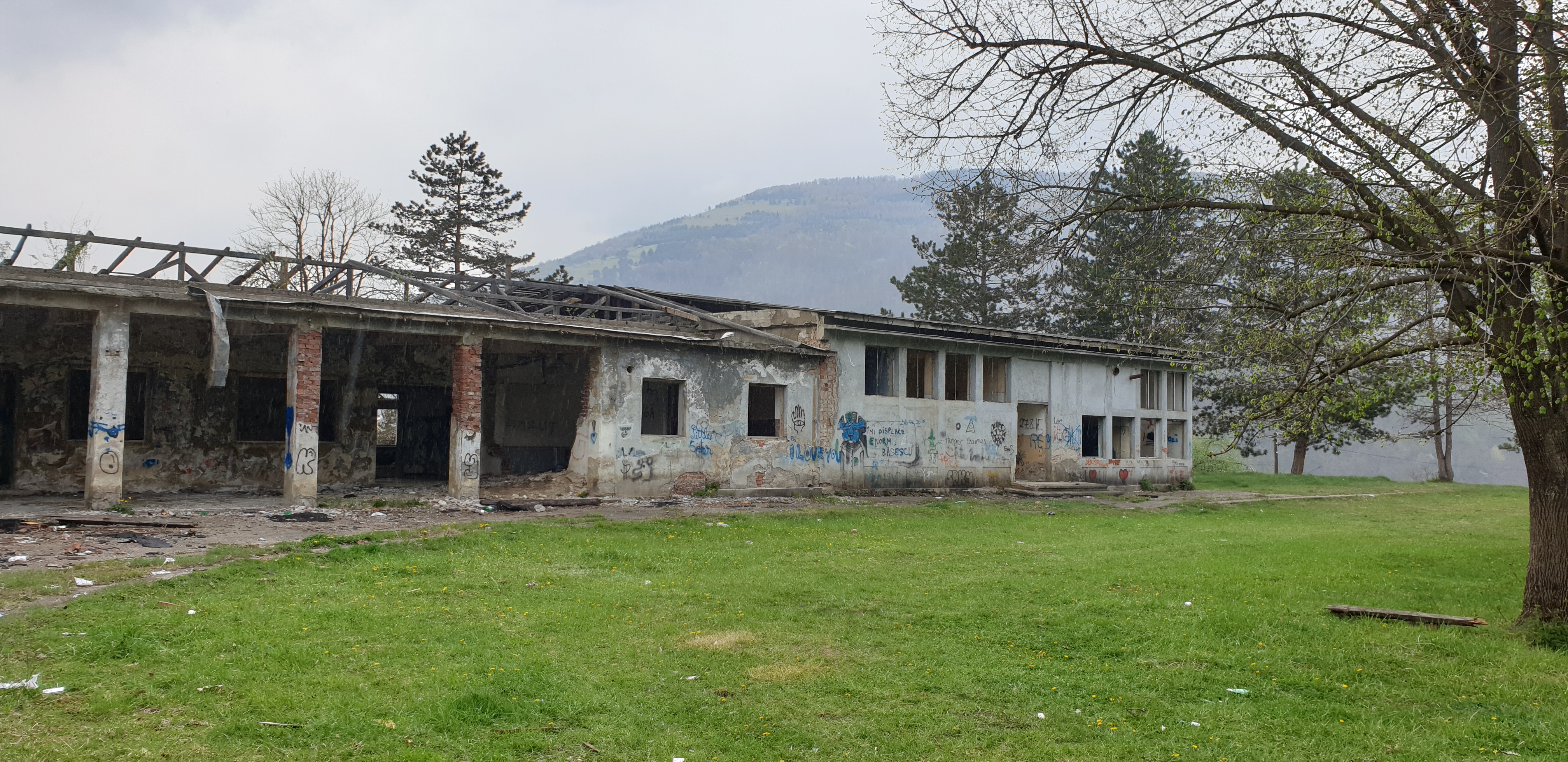
Abandoned building at the former gold mine from Baia de Arieș
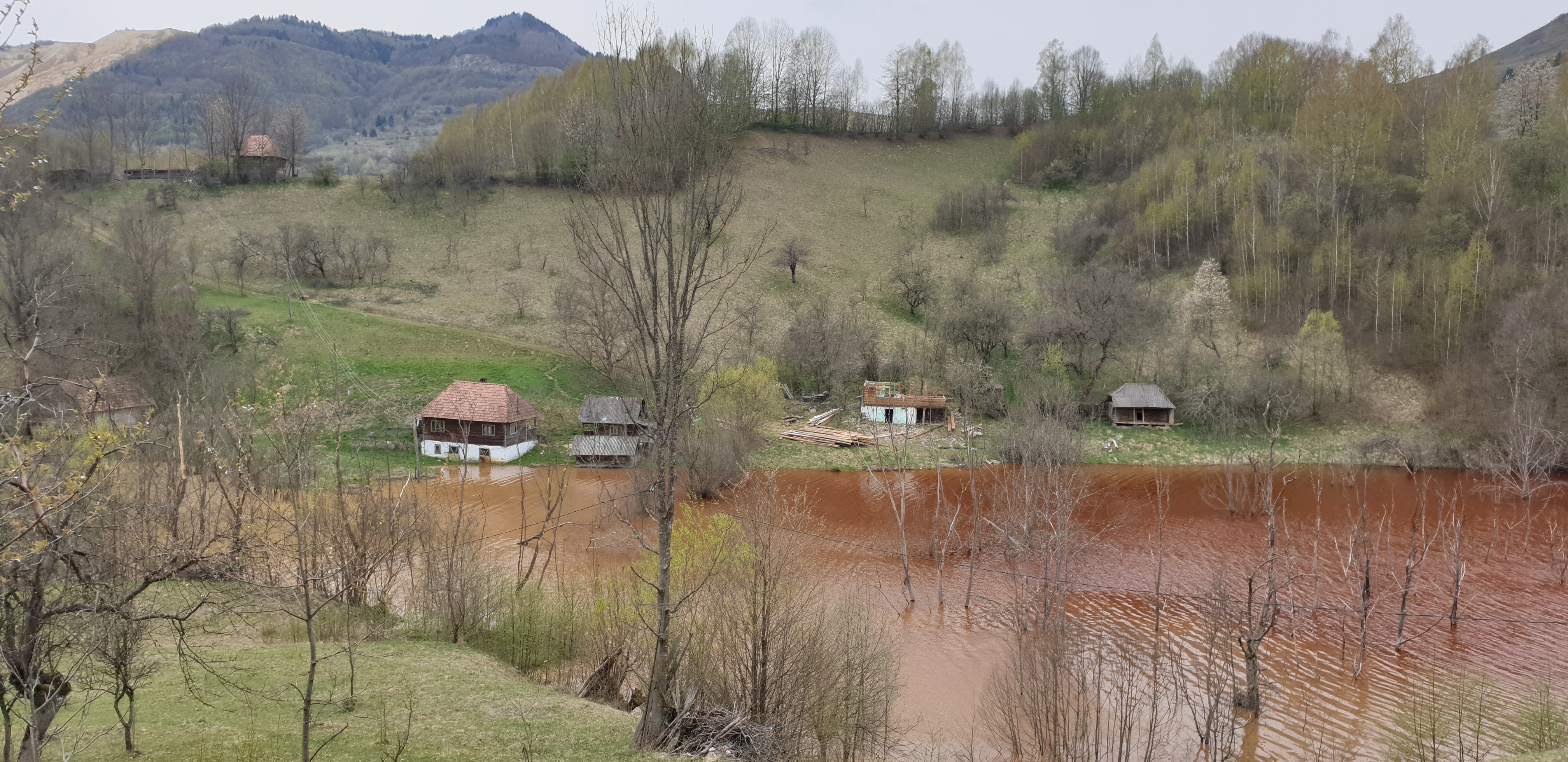
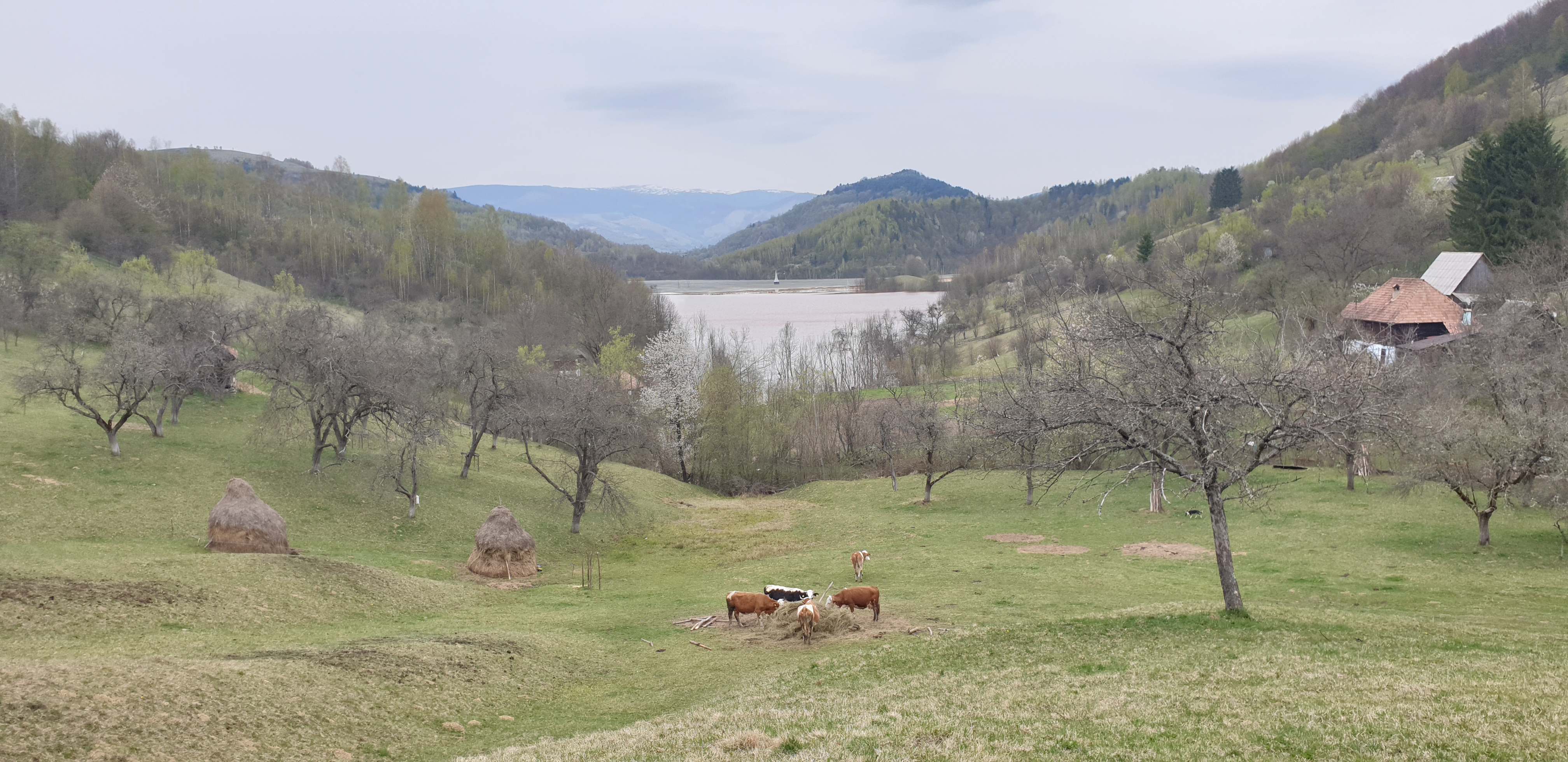
Valea Şesii tailings dam belonging to the Roşia Poieni mining exploitation
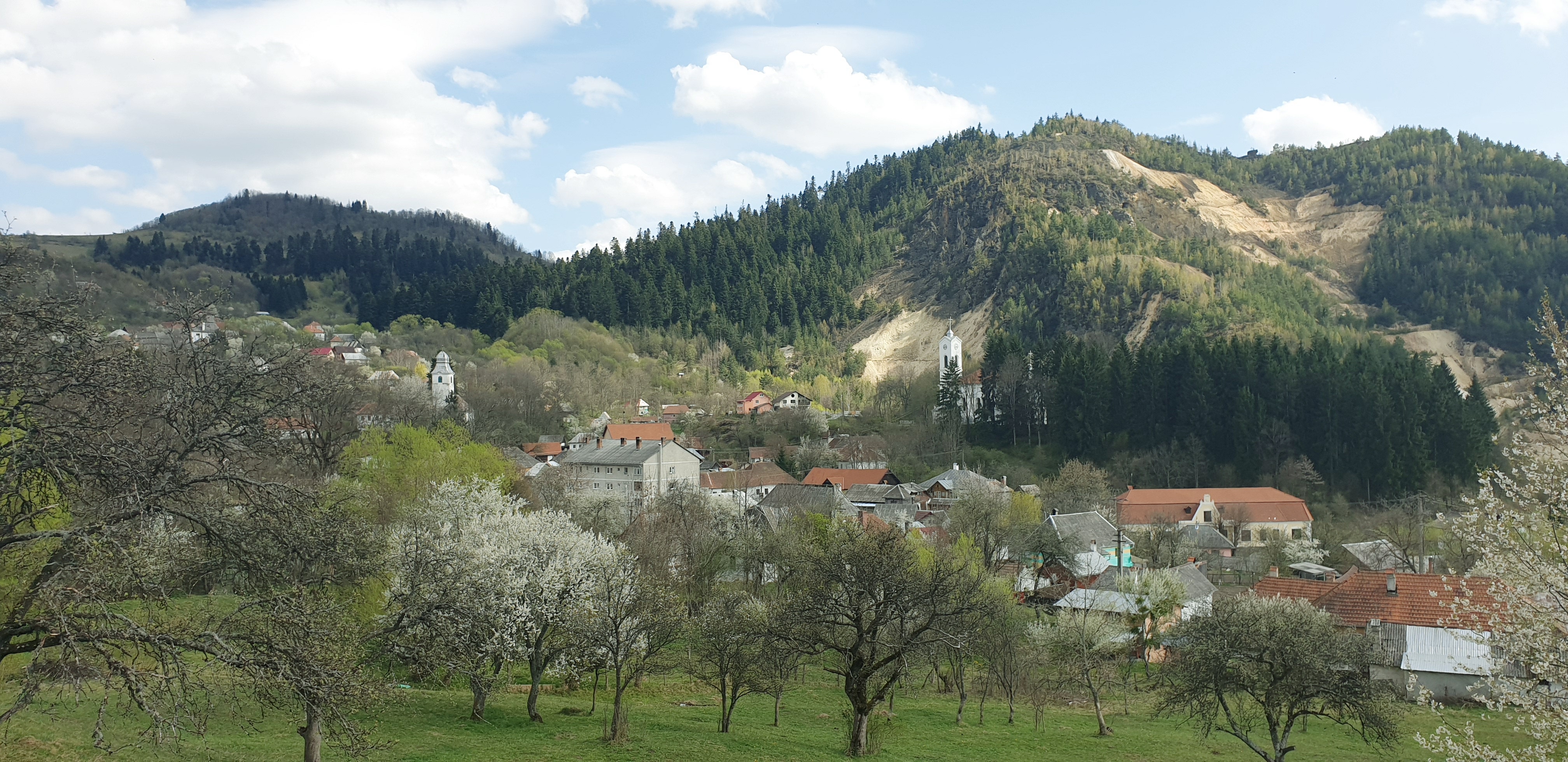
Roșia Montana village
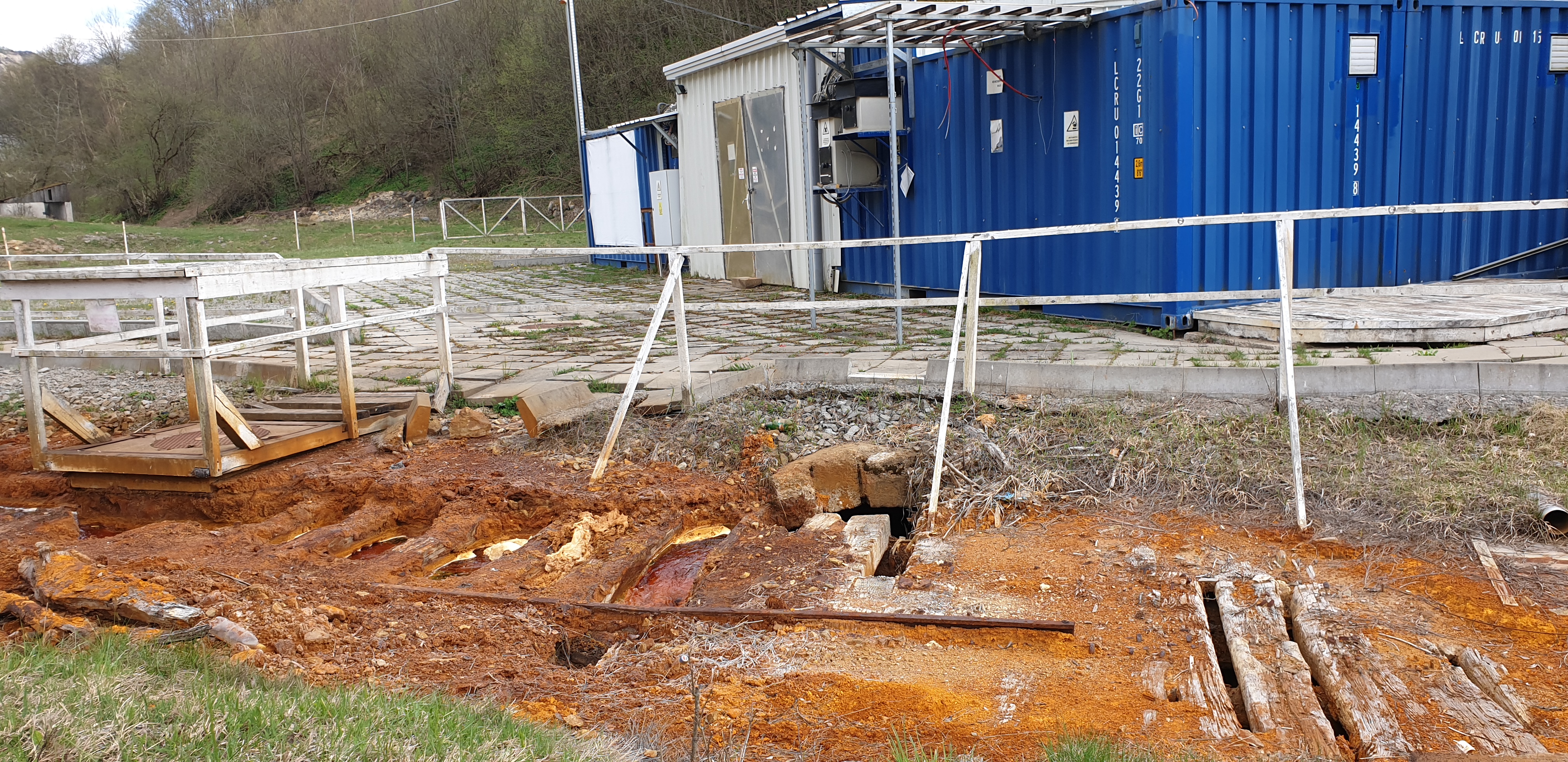
Pilot water treatment plant for acid mine drainage at Roșia Montana (not operational at present)
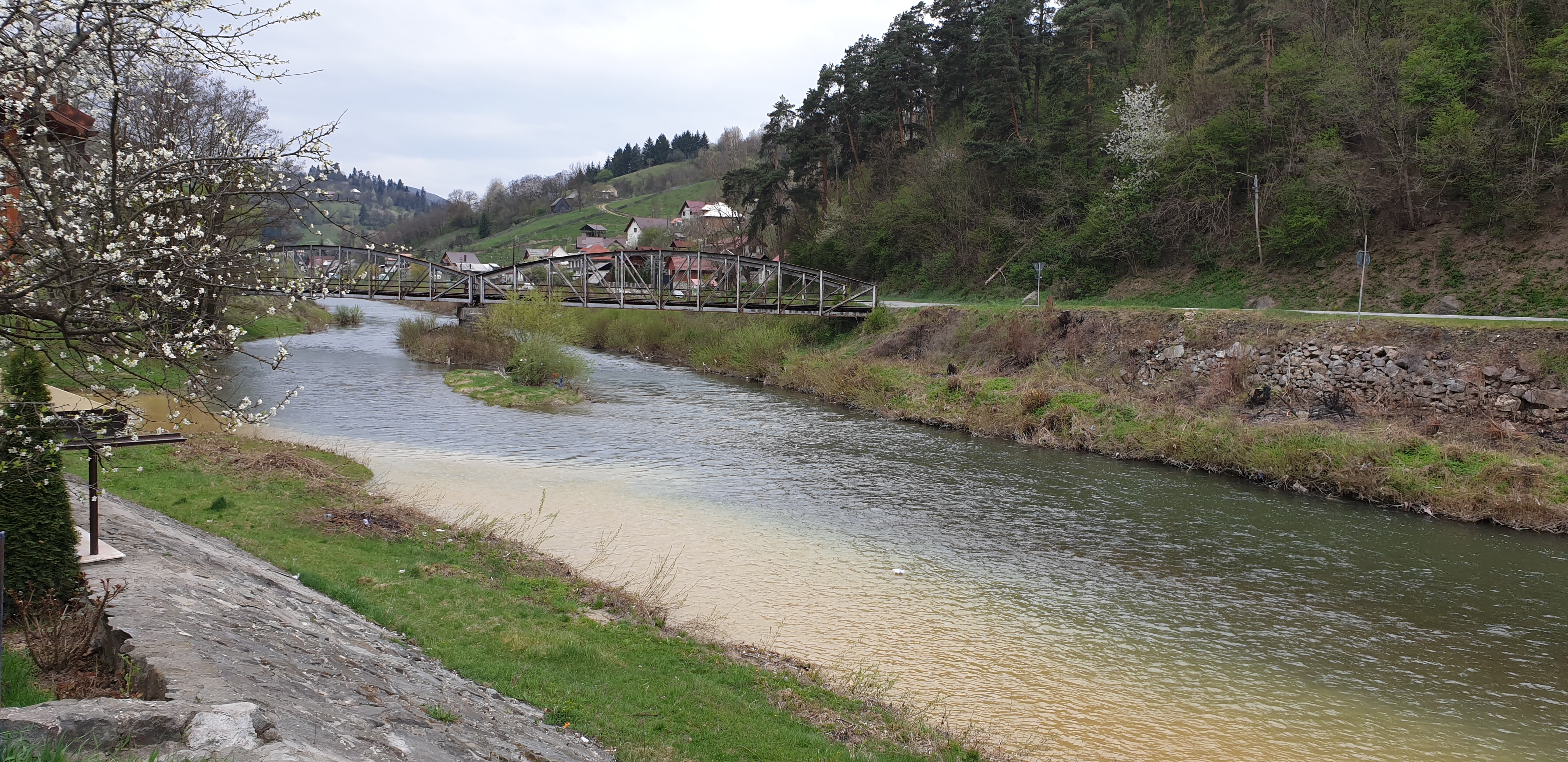
Abrud stream discharges into the Arieș river
Field work 26 August – 1 September 2019
The 3rd field activity within the ERMINA project was aimed to collect data for the assessment of the social representations of environmental risks in the study area. Between 26 August and 1 September 2019, six members of the ERMINA team conducted surveys within the local communities.
During the 7 day field work 271 persons responded to the survey. The gathered data will give an insight on how thepopulation understands the environmental risks in the mining areas.
The fieldtrip also included site visits at important mining objectives as well.
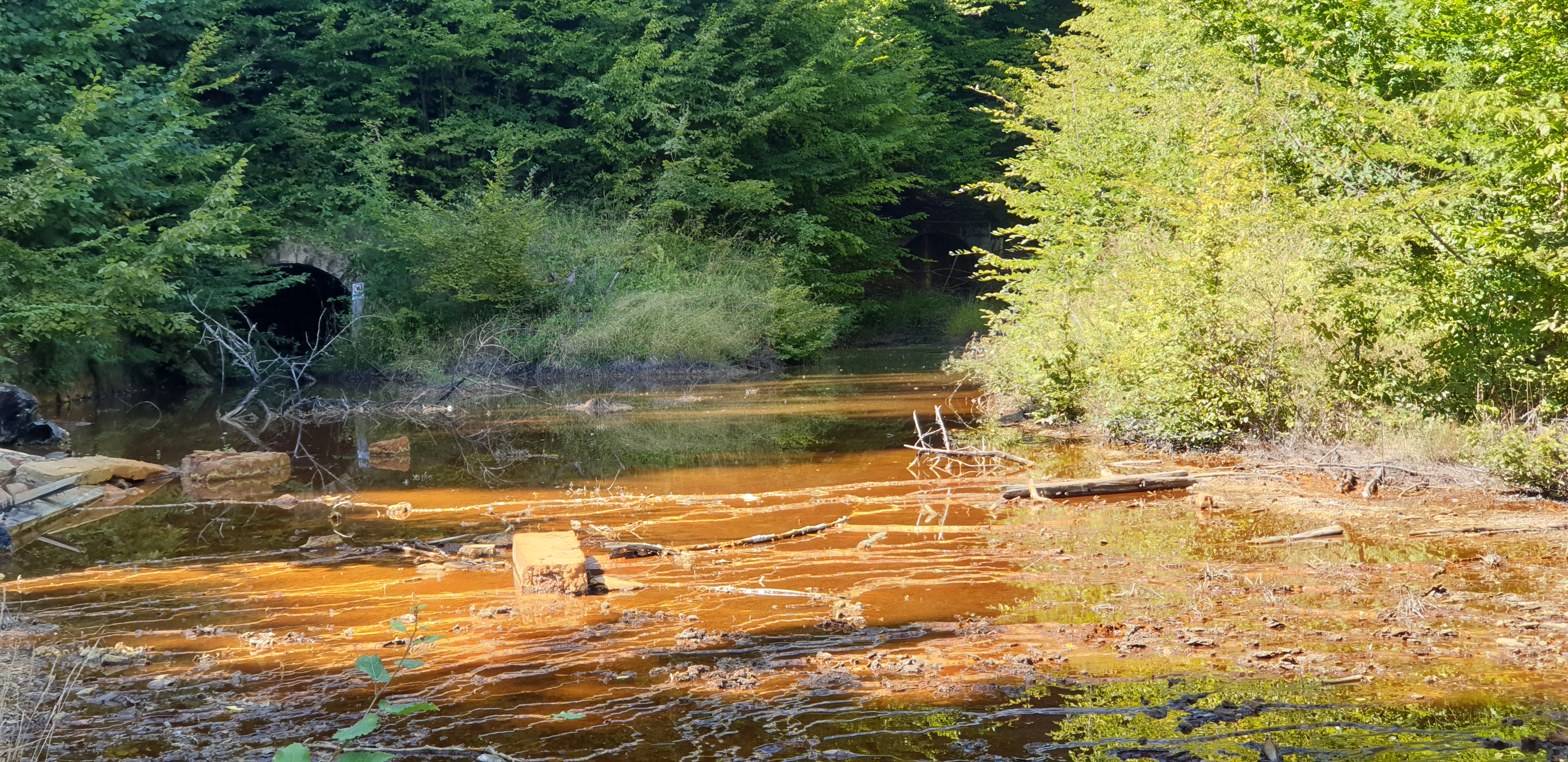
Abandoned mine entrances at the former gold mine Haneș
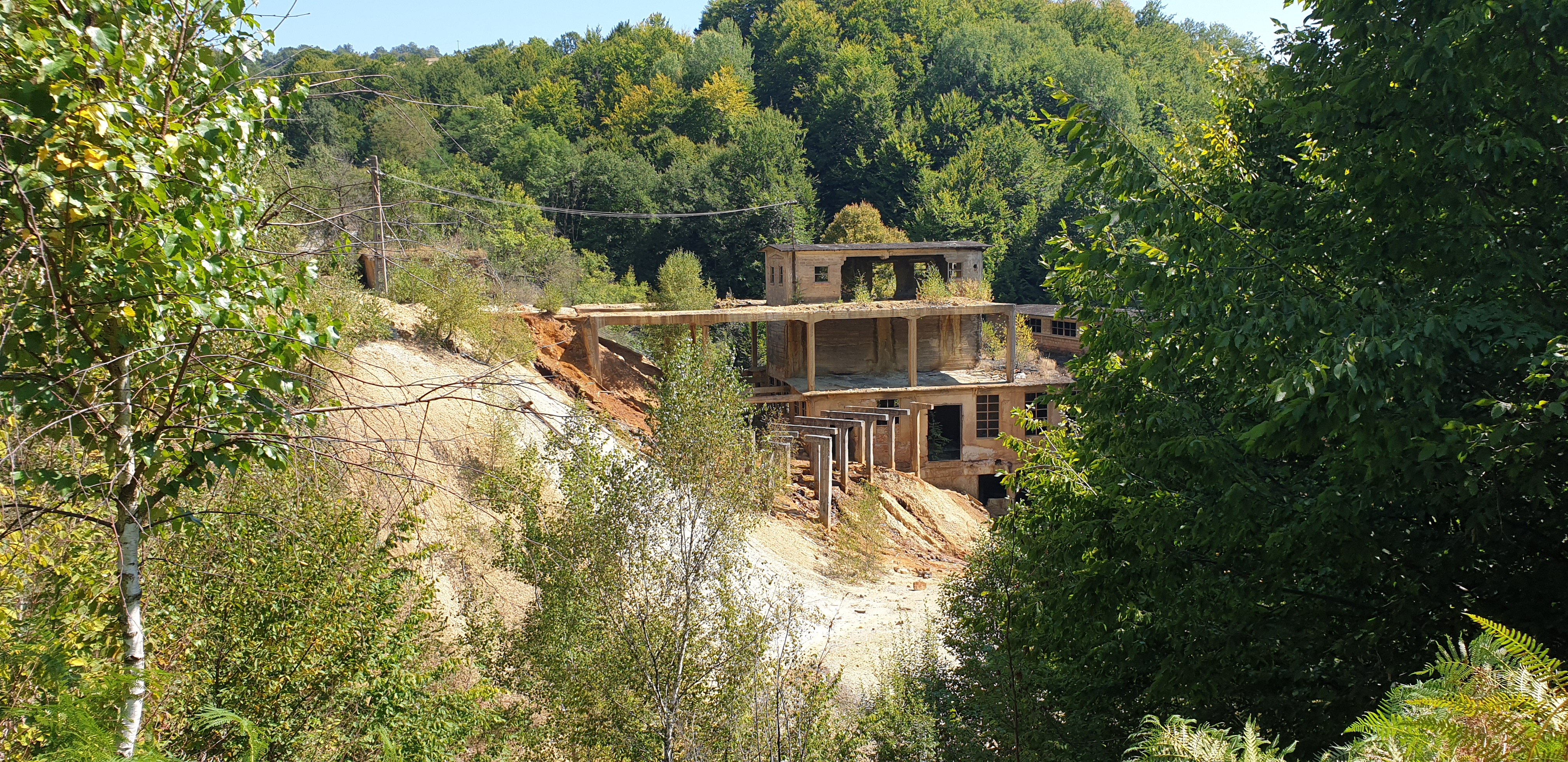
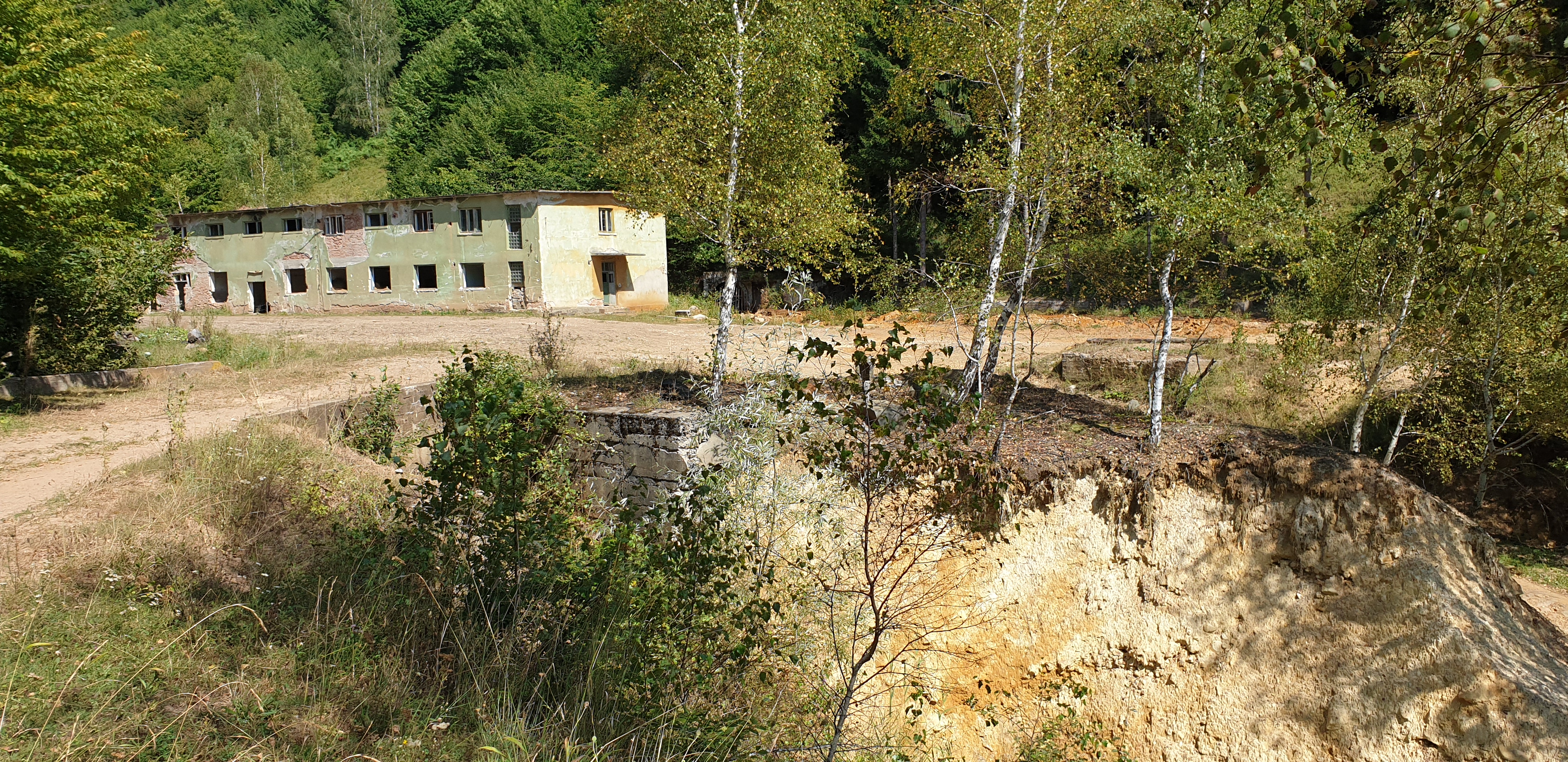
Abandoned building at the former gold mine Haneș
